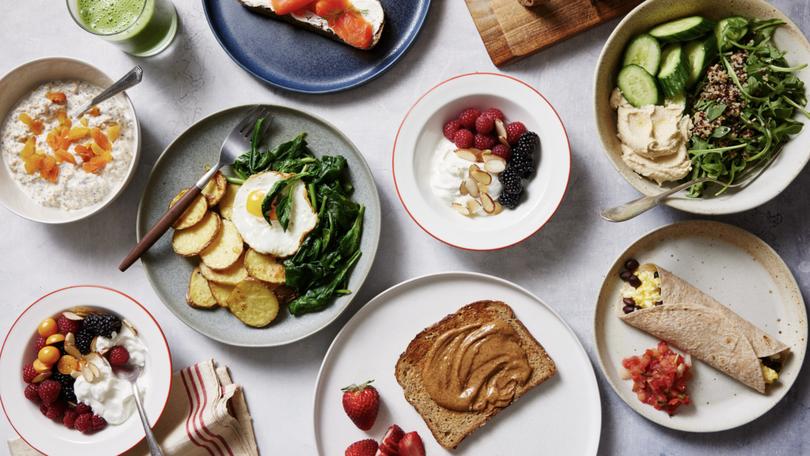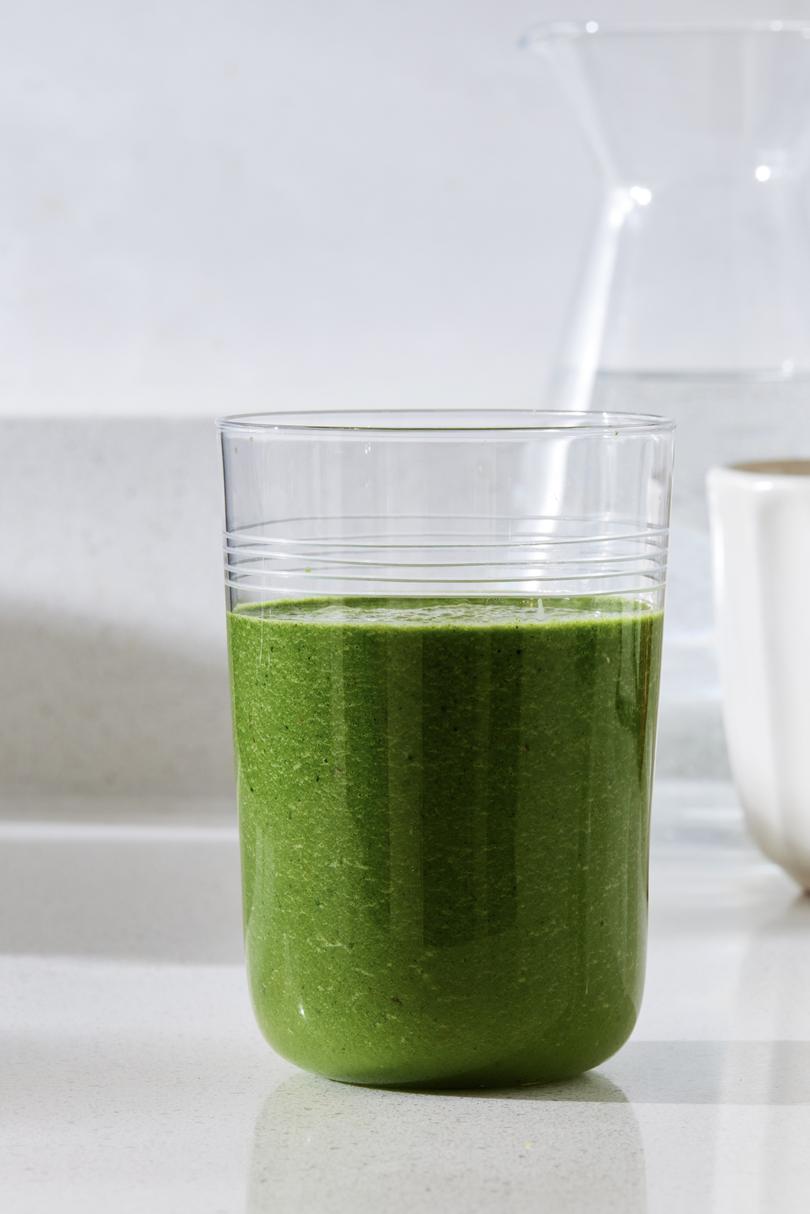The New York Times (Science Times): Secrets of a healthy breakfast

Each day, an estimated 10% to 20% of adults in the United States skip breakfast.
And that, nutrition experts say, may be a mistake.
Not only does a morning meal provide the fuel you need to start your day, but also numerous studies have found that eating breakfast regularly is associated with a range of health benefits.
Sign up to The Nightly's newsletters.
Get the first look at the digital newspaper, curated daily stories and breaking headlines delivered to your inbox.
By continuing you agree to our Terms and Privacy Policy.These include reduced risks for obesity, cardiovascular disease and Type 2 diabetes; as well as improved short-term memory in adults, better school performance in children and better diet quality overall, said Kathryn Starr, a registered dietitian and associate professor of medicine at Duke University School of Medicine.
“All of our meals are important; I don’t think breakfast is the most important meal,” Starr said. But it “kick-starts the process for our body to function properly.”
To maintain healthy blood sugar, energy and fullness levels until your next meal, getting the right balance of protein, fiber and unsaturated fats at breakfast is important, said Lauren Harris-Pincus, a registered dietitian in New Jersey.
This roughly translates to at least 20 grams of protein, eight to 10 grams of fiber and 10 to 15 grams of unsaturated fats, totaling about 300 to 350 calories, Harris-Pincus said.
But it’s important not to get hung up on the numbers, said Alice H. Lichtenstein, a professor of nutrition science and policy at the Friedman School of Nutrition Science and Policy at Tufts University.
Your nutrient needs will depend on your weight, activity level, age and health conditions, Lichtenstein said.
More important, she said, is focusing on what you enjoy and makes you feel energized and sated. “So many times we’ve tried to give people formulas,” she said, “and if you look at dietary patterns and scores in the U.S., we’re not doing that well as far as diet quality goes.”
“So what’s the ideal breakfast?” Lichtenstein said. “It’s whatever makes your body work best.”

Pay Extra Attention to Protein
One thing to prioritize when planning your morning meal, Harris-Pincus said, is protein. Many Americans consume more than enough protein throughout the day, she said, but they often don’t get enough at breakfast — and instead, opt for foods high in refined sugars or other carbohydrates, such as bagels, pastries or energy bars.
If they do prioritize protein, Starr said, they frequently choose foods high in saturated fats, such as bacon or sausage, which can increase the risk for cardiovascular disease.
Your body needs protein to maintain your muscle mass, metabolism and physical strength (among other things), Harris-Pincus said, but it can use only about 25 to 35 grams of protein per meal for those purposes. If you consume more protein in one sitting, your body will either use it as energy, store it as fat or excrete it.
So if you “skip breakfast or don’t eat protein at breakfast,” Harris-Pincus said, “you lose that opportunity because you can’t double up on protein later.”

Remember the ‘Shortfall’ Nutrients
Calcium, vitamin D, potassium and fiber are commonly called shortfall nutrients, Harris-Pincus said, because people in the United States often don’t get enough of them.
Over time, deficiencies in such nutrients can lead to problems including weak bones, poor gut health and high blood pressure.
But it so happens that many healthy breakfast foods are packed with those nutrients.
Most fortified cow’s milk contains calcium, vitamin D and potassium; most fortified cereals contain vitamin D (just be sure to choose those high in fiber and low in added sugars); bananas, citrus and many dried fruits have potassium; and oats are rich in fiber.
“So when you think about something like a bowl of whole grain cereal and milk with some fruit, that really makes a dent in those shortfall nutrients,” Harris-Pincus said.

Don’t Be Limited
You don’t have to confine yourself to standard breakfast fare to get a mix of nutrients in the morning, said Josephine Connolly-Schoonen, director of nutrition at Stony Brook Medicine.
“Any whole, plant-based food is going to have lots of phytonutrients,” she said, which are antioxidants that protect your cells from damage. These foods also contain fiber, which helps you stay full and supports gut health.
Coffee and tea can also provide some antioxidants and be part of a nutritious breakfast, Connolly-Schoonen said — just don’t overdo it on the sugar or cream.
Amanda Sauceda, a registered dietitian in Long Beach, California, is a proponent of expanding breakfast to include anything you might eat at any other time of day.
“I don’t love breakfast food, but I hate how my body feels if I don’t eat it,” she said.
Her go-to morning meal is often a version of the previous night’s dinner, which might be Chinese food or grilled chicken and vegetables.
“I’ve been known to eat whatever we had the night before and wrap it in a tortilla and make a burrito,” she said. “I’m still getting my food groups, even though it might not be what you traditionally eat for breakfast.”
Connolly-Schoonen said that taking your time and enjoying your food is important. Eat when you’re hungry, stop when you’re full, she said.
And breakfast doesn’t have to be first thing in the morning. “If you wake up and go to an exercise class at 7:30 a.m., you might have a few bites of something if you’re hungry, go to the class and come back and finish breakfast,” Connolly-Schoonen said. “Whatever works for you.”

Get Creative With Recipes
Many breakfast ideas that nutritionists recommend are simple to prepare, nutritious and delicious. Here are some options:
— Overnight oats made with milk, chia seeds, diced fruit and dried fruit.
— Whey protein smoothie with kale or spinach, fruit and Greek yogurt.
— Whole-wheat toast with nut butter and sliced strawberries.
— Greek yogurt with slivered almonds or walnuts and berries.
— Whole-wheat breakfast burrito with a mix of eggs and egg whites, cheese, beans and salsa.
— Steel-cut oats or high-fiber cereal with milk, whey protein powder, almonds or walnuts and sliced melon.
— Whole-grain toast with cream cheese and lox.
— Tofu scramble with skim mozzarella cheese, veggies, avocado and whole wheat toast.
— Leftover grilled chicken, roasted potatoes and green beans.
— Roasted potato slices on a bed of spinach, topped with an egg.
— Leftover quinoa mixed with arugula, hummus and cucumber.
This article originally appeared in The New York Times.
© 2024 The New York Times Company
Originally published on The New York Times
